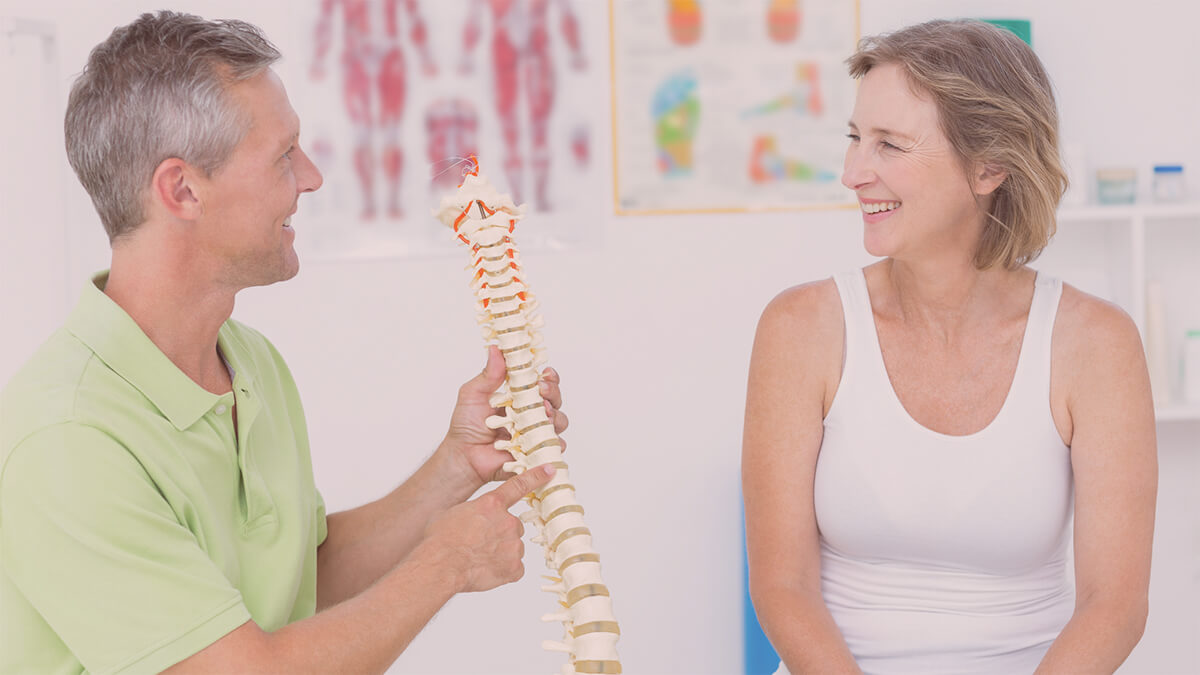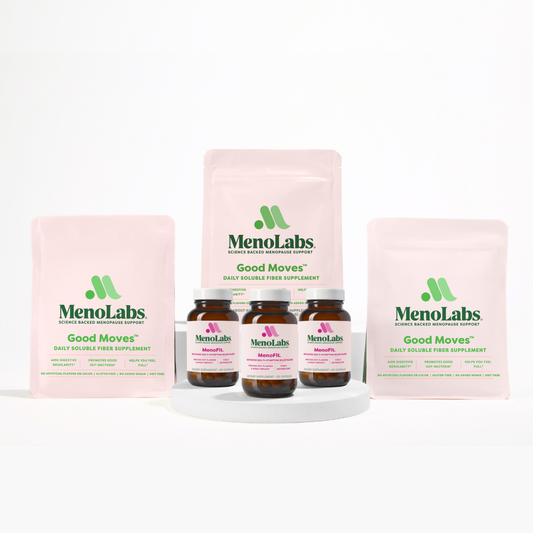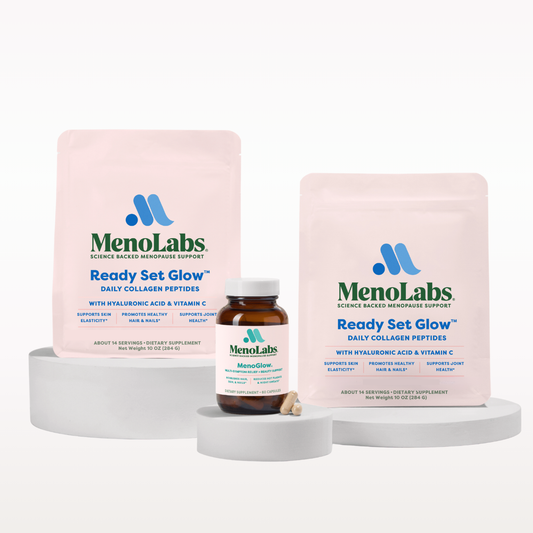
- Health
- Immune Health
- Know the Signs
Is Menopause Putting Your Bones at Risk?
While it is unlikely that this symptom can be reversed completely, there are things that women who have reached menopause can do to lessen the effects of this symptom and...
1 min read
Many women going through menopause find themselves experiencing aching joints and weakened bone strength. Women with preexisting medical conditions, such as arthritis, experience higher degrees of pain and have less success finding treatments. As a result, women of older ages have a higher risk of fracturing bones, even while doing simple tasks.
What is responsible for this sudden weakening of the bones? How can it be combatted during and after menopause?
Estrogen is the hormone responsible for regulating many systems in the female body, from controlling menstrual cycles to maintaining the sexual reproductive system. One of its most key roles is protecting bone health. When menopause begins, estrogen decreases in the body resulting in a loss of bone density. This decrease in estrogen makes bones in the body more brittle and more susceptible to fractures.

While it is unlikely that this symptom can be reversed completely, there are things that women who have reached menopause can do to lessen the effects of this symptom and maintain good bone health.
1) Keep an active lifestyle
Just as information must be repeated to memorize, active exercising must be repeated to maintain bone health. Riding a bicycle, taking long brisk walks, and light jogging are all forms of cardiovascular workouts that can also aid in strengthening bones. Bones become weaker when they are not in use. Sitting at a desk or remaining stationary for long periods can make bones more brittle. Women 45 and over, are recommended to engage in at least 150 minutes of moderate exercise each week. Not only does this exercise regimen help prevent any cardiovascular issues, but it also helps reduce the chance of extreme decreases in bone density.
2) Exercise: Weight-bearing and resistance
Cardio workouts are not the only forms of exercise that can help maintain proper bone health. Weight-bearing exercises and resistance exercises can also help strengthen your bones as well as your muscles. Weight-bearing activities are exercises in which your legs and feet support your body weight. These types of exercises help to strengthen the muscles surrounding bones and joints. High impact weight-bearing exercises like running, dancing, and aerobics are perfect for promoting bone health.

While weight-bearing exercises may be useful for the lower body, resistance exercises are ideal for including the upper body into full-body workouts. Resistance workouts cause muscles to pull on the bones in the body. This pulling then helps promote muscle tissue to build up around the bones. It is especially helpful for reducing joint pain — resistance exercises such as push-ups and exercises that utilize resistance bands are highly recommended as part of a regular routine. Resistance exercises should be done at least twice a week to help ease the body's muscular development.
3) Maintain a healthy diet
Diet plays a substantial part in promoting better health during menopause. Bones require nutrients to develop properly and maintain density. The nutrients that bones primarily need are calcium and vitamin D. These nutrients are in a variety of foods. Still, it is highly recommended that women experiencing menopause take supplements to help meet the nutritional requirements they need.
Incorporating leafy greens, nuts, seeds, dried fruits, milk, cheese, and cultured dairy like yogurt can help provide high quantities of calcium into a regular diet. Foods that are rich in vitamin D include certain types of fatty fish like salmon, eggs, and fortified breakfast items. Introducing these foods into a regular diet may help promote bone health, especially if accompanied by a nutritional supplement.
4) Soak up sunlight
Vitamin D can be obtained through more than just fatty fish or dietary supplements. Sunlight is also a source. When skin is exposed to sunlight, it creates vitamin D from cholesterol. UVB rays from the sun impact cholesterol within skin cells and help turn that cholesterol into vitamin D. Spending time in the sun can help increase vitamin D levels and overall bone health. Spending even half an hour in the sun can help promote better health.

5) Keep alcohol and smoking low
The consumption of alcohol and smoking tobacco are already known to have health repercussions. For women going through menopause, these substances can be especially harmful. Smoking increases the likelihood of osteoporosis in menopausal women. For women who already have osteoporosis, smoking during menopause can exacerbate this illness and increase the risk of fracturing bones.
Alcohol can similarly affect the likelihood of increasing bone density loss. Alcohol interferes with the calcium balance within bones. It also increases cortisol levels in the body, which negatively impacts bone formation. These substances can have a severe impact on bone density and can cause the formation of holes. This makes it more likely for women to fracture bones and reduce the likelihood of those fractures healing.
What Treatments Are Available?
While these elements can be incorporated into everyday life for women undergoing menopause, even the most rigid regimen may not be enough to help combat issues of bone loss. There are various medications and treatments to help reduce the risk of bone fractures. If for any reason, there is a high risk of osteoporosis entering menopause, treatment becomes necessary to prevent bones from degenerating further.
One of the most common forms of treatment is hormone replacement therapy (HRT). HRT helps to replenish the estrogen that the body has lost to regulate multiple systems in the body properly. However, HRT is not a perfect solution to preventing bone loss altogether, nor does it reverse osteoporosis. HRT is not permanent and can wear off after treatment has ended during the menopausal years. Later on, after menopause has disappeared, the body returns to losing bone density. While it may not be permanent, it can help relieve the joint pain that women might experience during menopause.
To get a better understanding of how menopause affects bone density and the measures that can be taken to combat it, these two research studies can provide detailed information on the subject.
A study that observes and outlines guidelines for healthcare providers on the diagnosis, prevention, and treatment of postmenopausal osteoporosis.
A study that observes the challenges of postmenopausal osteoporosis in Brazilian subjects from case studies.
Related Products
Blend Besties Bundle
Fresh Start Bundle
4.7 / 5.0
(552) 552 total reviews





